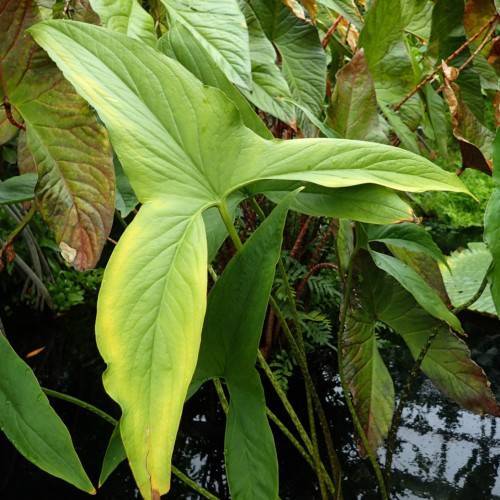
pinellia
Pinellia 'Polly Spout'
Cycle:
Herbaceous Perennial
Watering:
Average
Hardiness Zone:
5 - 9
Flowers:
Flowers
Sun:
Part shade,full shade
Leaf:
Yes
Growth Rate:
Low
Maintenance:
Low
Poisonous To Pets:
Yes
Salt Tolerant:
Yes
Care Level:
Medium
watering
Pinellia 'Polly Spout' needs to be watered moderately in the spring and summer months. Water your pinellia enough to keep the soil evenly moist, but avoid overwatering as it will cause root rot. Allow the top 1 to 2 inches (2.54 cm to 5.08 cm) of soil to dry out in between waterings. During the winter months, allow the top 4 to 5 inches (10.16 cm to 12.7 cm) of the soil to dry out before watering again. Also, be aware that they are sensitive to extreme temperature changes, so avoid drastic and sudden increases or decreases in watering amounts.
sunlight
Pinellia 'Polly Spout' require a moderate amount of sunlight to thrive. During the summer months, it should receive approximately 4-6 hours of direct sunlight per day. In the winter months, it should receive at least 3-4 hours of direct sunlight per day. This will help the plant to reach its full growth potential. It is best to avoid exposing the plant to direct sunlight during the hottest times of the day, such as around midday. Doing so may cause sunburn or wilting of its delicate leaves.
pruning
Pinellia (Pinellia 'Polly Spout') should be pruned annually, right after flowering has finished. Pruning should involve removal of any dead, diseased or broken branches, as well as pruning back any overly vigorous growth. Pinellia should also be thinned to promote new growth. To begin, remove a third of the oldest stems at soil level. This will reduce the overall size of the plant as well as encourage new growth from the base. Pruning should also be used to shape the plant and promote the desired form. Use sharp, sterilized tools when pruning and aim to cut back by a third, either all at once or over several times.
